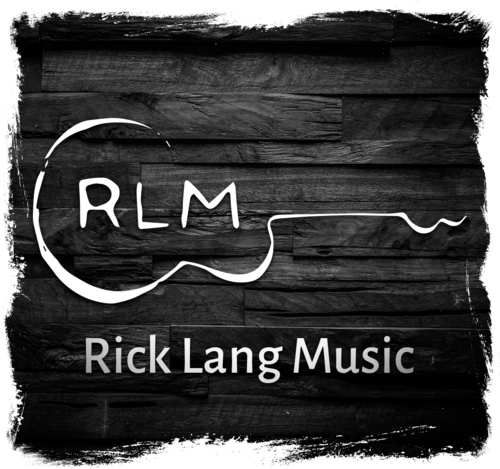Refining a song is all about polishing your ideas into a finished track that resonates with listeners. Here’s a quick overview of what to focus on:
- Structure: Organize verses, choruses, and transitions for a smooth flow.
- Lyrics: Strengthen your message with better word choices, metaphors, and rhyme patterns.
- Musical Elements: Adjust melodies, harmonies, and chord progressions to enhance emotional impact.
- Production: Clean up tracks, balance instruments, and refine the mix for a professional sound.
The goal isn’t perfection – it’s making intentional choices that highlight your song’s core message and emotional pull. Whether you’re a beginner or experienced songwriter, these steps can help you create music that truly connects.
How to Refine Your Song | Songwriting Workshop
Song Structure Basics
A well-structured song keeps listeners engaged by using clearly defined sections. Most songs include verses, choruses, and bridges, which work together to create a natural flow.
Verse, Chorus, and Bridge Layout
Verses are where the story or idea of the song unfolds. Choruses, on the other hand, highlight the main message with catchy, memorable lines. A typical layout might look like this: start with a verse, move into a chorus, follow it with another verse and chorus, and then introduce a bridge. The bridge adds variety, offering a fresh perspective or emotional shift before returning to the final chorus.
Section Transitions
Transitions between sections are key to maintaining the song’s momentum and emotional flow. You can adjust the instrumentation or dynamics to make these shifts feel natural and seamless.
Arrangement Cleanup
Remove anything that distracts from the song’s main message. Focus on clarity and let your creative vision guide the arrangement. Afterward, refine your lyrics to strengthen the story or theme.
Lyric Improvement
Great lyrics are the foundation of unforgettable songs. Fine-tuning your lyrics can help create stronger emotional connections and bring your story to life.
Message and Story Editing
Your lyrics should create vivid imagery and stir specific emotions. Start by identifying your main theme and ensuring every line supports it.
Here’s how to refine your message:
- Summarize your song’s main idea in one sentence. Remove any lines that stray from this focus.
- Highlight the lines that clearly reinforce your theme. These are the anchors of your song.
If you find yourself stuck, tools like AI lyric generators can help spark ideas and streamline your creative process.
Once your story feels solid, shift your attention to the rhyme schemes to enhance rhythm and flow.
Rhyme Pattern Updates
Rigid rhyme patterns can sometimes stifle creativity. Experiment with different styles, such as:
- Perfect rhymes (e.g., light/night)
- Slant rhymes (e.g., heart/dark)
- Internal rhymes (rhymes within a single line)
- Assonance (repeating vowel sounds)
Mixing these rhyme types can keep your lyrics engaging and natural. If a rhyme feels forced or disrupts your message, don’t hesitate to rework the line or choose a near-rhyme instead.
Word Choice and Metaphors
Once your theme is clear, focus on choosing words with stronger emotional weight and imagery. Here’s how certain word choices can elevate your lyrics:
| Basic Word | Enhanced Word | Why It Works |
|---|---|---|
| Walked | Stumbled | Adds a more vivid and nuanced action |
| Sad | Heartbroken | Expresses a deeper emotional layer |
| Beautiful | Radiant | Creates a more specific and striking image |
To refine your lyrics further, consider setting SMART goals:
- Specific: Focus on particular areas to improve, like word choice or rhyme.
- Measurable: Track changes and progress as you revise.
- Achievable: Set realistic goals for each writing session.
- Relevant: Ensure every change aligns with your song’s message.
- Time-bound: Give yourself deadlines to stay on track.
When using metaphors, aim for ones that resonate with shared experiences. Keep them consistent and meaningful, avoiding overly complex or obscure comparisons. Reading your lyrics aloud is a great way to catch awkward phrasing or rhythm issues.
sbb-itb-1c6af30
Musical Elements
After revising your lyrics and structure, it’s time to refine the musical aspects of your song to strengthen its message and overall impact.
Vocal Melody Refinement
Your vocal melody should not only match your lyrics but also stand out and enhance the emotional tone. Pay attention to these areas:
- Melodic Contour: Shape your melody with rises and falls that reflect emotional shifts in the song.
- Peak Moments: Place high notes where they can emphasize key lyrics or emotional climaxes.
- Breathing Space: Include pauses to give listeners a chance to absorb the message.
Here’s how different intervals can affect the mood of your song:
| Interval Type | Emotional Effect | Best Use |
|---|---|---|
| Step-wise Motion | Smooth and natural flow | Verses or storytelling parts |
| Large Jumps | Adds drama and emphasis | Chorus or emotional peaks |
| Repeated Notes | Builds intensity | Tension or strong statements |
Chord Progression Review
Take a close look at your chord progressions to ensure they align with the mood of your lyrics. Avoid overly predictable progressions and experiment with substitutions to keep things fresh.
Try these techniques to enhance your progressions:
- Swap simple chords for extended ones (e.g., change C to Cmaj7 for a richer sound).
- Add passing chords to create smoother transitions and movement.
- Use borrowed chords from parallel keys to add unexpected colors.
To further elevate your arrangement, consider incorporating harmonies and counter-melodies.
Harmony and Counter-Melody Addition
Adding harmonies and counter-melodies can bring depth and texture to your song without overwhelming it. Here’s how to do it effectively:
Strategic Placement
- Highlight key moments like the chorus or bridge.
- Fill gaps between vocal phrases for added interest.
- Echo key melodic phrases to reinforce their importance.
- Introduce rhythmic contrast for variety.
Balance
- Keep counter-melodies simple during verses to avoid overcrowding.
- Use call-and-response techniques to create engaging interplay.
- Leave space between elements to maintain clarity and focus.
These adjustments can help your song feel more dynamic and emotionally resonant.
Production Quality
Once the musical elements are in place, production transforms your song into a polished, professional track. This process ties everything together, ensuring a cohesive and impactful sound.
Instrument Track Cleanup
Make sure each instrument has its own space in the mix. Clear separation helps every part stand out while contributing to the overall arrangement. The goal is to let each instrument shine without overpowering others.
Vocal Recording Enhancement
Fine-tune vocal dynamics and tone to keep them clear and emotionally engaging. Tailor your adjustments to match the unique qualities of the recording, ensuring the vocals remain the centerpiece of the track.
Final Mix Adjustment
Bring everything together by balancing levels and refining stereo placement. A well-crafted mix amplifies the song’s message and gives it a polished, professional edge.
Conclusion
Refining a song turns it from good to great by improving its structure, lyrics, musical elements, and production quality step by step to create a polished, professional sound.
Set specific, measurable goals for each stage of refinement. For example, aim to rewrite a verse within two hours or reduce instrumental layers by 25%. These clear targets help keep your progress on track.
Find the right balance between simplicity and complexity in your arrangements. Minimalist setups can create strong emotional connections, while more intricate arrangements might better convey your song’s message. The trick is to choose the level of complexity that supports, rather than distracts from, your core idea.
Leverage modern tools to streamline your process. AI lyric generators, for instance, can spark ideas when you’re stuck, but treat them as starting points while keeping your own voice front and center. When collaborating online, make sure to set up clear communication and rights agreements to protect everyone’s contributions.
Refinement is an ongoing process where each revision builds upon the last. Trust your instincts and use these strategies to create music that combines artistic expression with a polished, professional finish.











